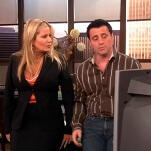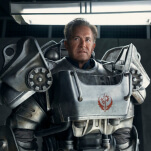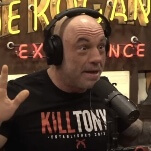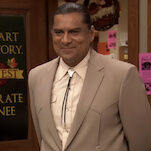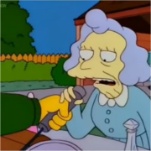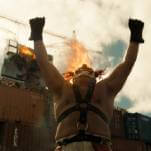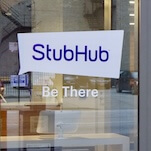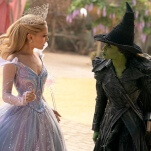For over 50 years, the Marlboro Man has served as one of the most instantly recognizable advertising icons in the world. Created in 1954, he helped shift Marlboro’s image as a sweet little cigarette for moms:
The Marlboro Man lives on today, albeit in a diminished capacity now that cigarette ads are much less a part of everyday life than they used to be. And even if cigarette ads were to disappear entirely, he’d likely live on in memory for a while. But what of the cigarette men that labored in his shadow?
Like a lot of virile world travelers, the Marlboro Man sired his share of bastards over the years, most of them now only dimly remembered by those who grew up at a time when cigarette ads popped up on seemingly every third page or so everything from TV Guide to Ladies’ Home Journal. Paging through back issues of the Rolling Stone: Cover To Cover collection, a DVD set collecting every page of the magazine from 1967 to 2007, I was struck by some of these largely forgotten, would-be icons and found myself thinking about who they were designed to reach. Marlboro had the market sewed up on cowboy iconography and with it all those men who identified with the timeless vision of rugged individualism it represented. So who did that leave? Here’s a sample of Marlboro Man almost-weres taken from 1980s ads.
Are you a man of danger and excitement willing to risk at all for the betterment of mankind? Have a Winston! Winston ads regularly featured men doing dangerous deeds. But these weren’t selfish daredevils. They were men with tough jobs to do—be they pilots or oil-rig workers—who didn’t mind doing them, thank you very much. But, dammit, when they had some downtime, they were going to enjoy a Winston.
The virtually forgotten Vantage brand—which, like so many cigarette brands, continues to be manufactured but not actively marketed—focused on men doing manly things, but of the more everyday variety. They brought an intense focus to their pursuits, be they fishing or, as in the ad above, directing a movie. They didn’t face the dangers of, say, the Winston Hero, but they earned their smokes anyway.
Kool usually employs images of snow to reinforce its name. But it also had a second identity as the sponsor of a famous jazz festival. A series of ‘80s ads featured ugly white guys playing music. Because that’s, apparently, the kool thing to do.
The Barclay Sophisticate
Are you a man who’s uncomfortable when not wearing a tux? Have you been or ever wanted to be an international super-spy? Then Barclay’s the smoke for you!
The Sexually Experimental Salem Man
Two guys? One girl? I’ll bet we can work something out anyway, right after this Salem.
The Lucky Asshole
See above.
But the most enduring ersatz Marlboro Man belonged to Camel. Camel is, of course, no stranger to striking iconography. Its packaging remains an alluring piece of advertising art. And for a decade from 1987 to 1997, it used the instantly recognizable Joe Camel as its mascot. A hip, cartoony, but oh-so-cool cartoon character Joe proved popular with adults and appealing to kids. A 1991 study showed he had higher recognition amongst five- and six-year-olds than Mickey Mouse or Fred Flinstone. By 1997 he was so dogged by controversy that he was forced to stub out his last butt.
But Joe had a predecessor in the form of what I’ll simply call Camel Guy.
From 1980 to 1986, Camel used ads featuring the same rugged, becurled, slightly homely adventurer. He appeared, at first at least, accompanied only by this slogan: “Where a man belongs.” And where does a man belong? In an exotic—but invitingly exotic—locale, doing non-descript manly things. He might be wading through a river:
Biking through rough terrain:
Squatting on a log bridge:
Or working a handcar for some reason:
But he would definitely be smoking. Or at least thinking about smoking.
For such a long-lived campaign, they’re weirdly unappealing, at least on the surface. It’s almost as if Camel gave up finding an angle and simply decided to go toe-to-toe with Marlboro in a dick-measuring contest. You’ve got your cowboy? Fine. We’ve got our action man and he’s macho too. Ugly, sure, but he’ll take your cowboy any day.
Here’s a small but crucial difference between the two campaigns: Where sometimes the Marlboro Man was by himself, he occasionally enjoyed the company of other, no less manly men. And even when he was alone, the Marlboro Man worked with others. A cowboy symbolizes individual freedom, but he still has a job to do. The Camel Guy walked alone (or rode, or boated, or whatever). From the beginning through today, Camel trades on the appeal of the accessibly exotic. Its tobacco is, after all, partly Turkish. It makes sense, then, for Camel to appeal to self-identified loners, men who wore proudly the traits that set them apart from the crowd. On the inside, I might be a weird looking guy with a mustache, but I’m okay with that. I’m on an adventure of my own making. Now I’m going to have a Camel.
Toward the end of his advertising life, however, Camel Guy was given no-less-ugly, no-less-macho friends and a new, less loner-friendly slogan:
It didn’t work. He was born to smoke alone. Soon he lost his job to a cartoon.
It’s been 23 years since Camel Guy last wandered the advertising wilds, and I find myself wondering what he’s up to. Did he find the companionship of fellow Camel enthusiasts suited him? Is he still out there, going it alone, pausing regularly from his adventures to enjoy a smoke? I like to think so. But in my heart, I’m pretty sure he met a different fate. Several Marlboro Men models quite famously died of cancer. Assuming he dodged that disease, emphysema, or any of the other smoking perils, I suspect the years of lonely adventuring took their toll. He’s probably on a houseboat now, known around some small Florida town only because he ventures in for groceries once in a while. When he dies, it will be days before they find his body. Or maybe he sits alone at a bar, tossing back whatever his retirement fund will allow him to drink between social security checks. If he wants to smoke, the law now makes him wander outside. He stands 15 feet from the door and averts his eyes from the passing crowd. Sometimes they pause for a moment and wonder where they’ve seen him before.
